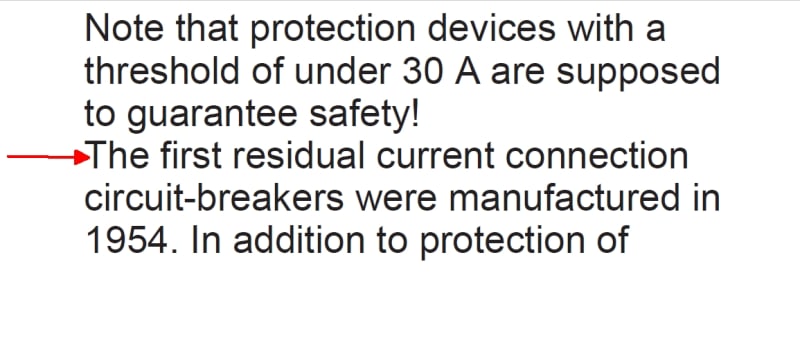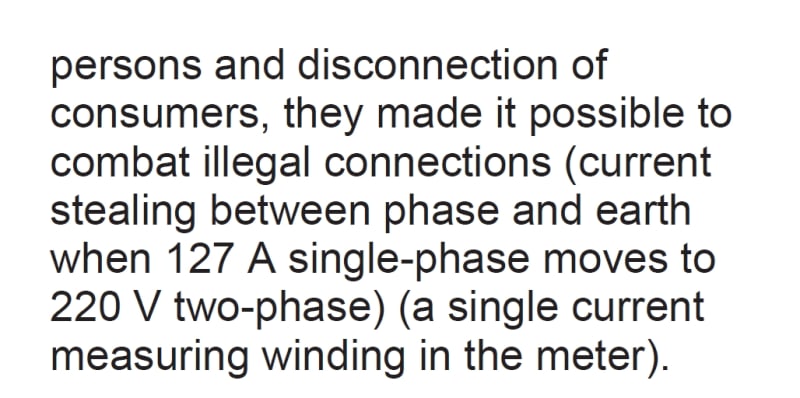Navigation
Install the app
How to install the app on iOS
Follow along with the video below to see how to install our site as a web app on your home screen.
Note: This feature may not be available in some browsers.
More options
Style variation
-
Congratulations cowski on being selected by the Eng-Tips community for having the most helpful posts in the forums last week. Way to Go!
You are using an out of date browser. It may not display this or other websites correctly.
You should upgrade or use an alternative browser.
You should upgrade or use an alternative browser.
Disconnection time 120 volts vs 150 volts
- Thread starter Mbrooke
- Start date
- Status
- Not open for further replies.
If there is a need to comply with the IEC 60364-4-41, there is no choice other than comply with the table presented.
In the USA and locations that are in the jurisdiction of the NEC, there is not necessarily of clearing the fault as indicated.
Should be fair to say that under the NEC jurisdiction, some areas requires 120V circuit be protected by GFI that is capable to clear ground-fault within as little as 1/40 (0.025)of seconds when the amount going differs from the amount returning by approximately 5 milliamperes.
- Thread starter
- #3
I will not go that far saying the NEC ignores the physiological response to electricity in this regard. I do concur that "the purpose of this Code is the practical safeguarding of persons and property from hazards arising from the use of electricity."
The NEC is not directly involved in defining the physiological of human safety hazards to electric shock, rather it takes this into consideration in the implementation of the electrical installation such as grounding, sizing protective devices, installation practice, requiring UL leveling, using GFI, etc. Correction actions and improvements are historically performed base on safety statistics and other inputs. The NEC review periodically the safety practice and recommend improvements.
Beware that outside the USA there are other installations and grounding practices uncommon in the area were the NEC have jurisdiction. This may explain the possible differences in protective devices' clearing time.
- Thread starter
- #6
@Cuky: I have to disagree without your first sentence. Being able to legally run 2000 feet of #12 to a shed or light pole where a short circuit won't trip a breaker is not safeguarding of persons. 60 volts can still harm someone let alone 139 volts.
aussiejohn2
Electrical
Mbrooke,
IEC 479 is worth a read if you have access (even though you have to follow the rules of your jurisdiction). It has a fair bit of the physiology including charts showing the ("consensus") time-current boundaries for various physiological outcomes. I don't have it on this PC but comparison with some values in an old report of mine suggests your table might be based on 5% probability of fibrillation (but the coarse table i.e. not many date points makes it hard to be sure).
John.
IEC 479 is worth a read if you have access (even though you have to follow the rules of your jurisdiction). It has a fair bit of the physiology including charts showing the ("consensus") time-current boundaries for various physiological outcomes. I don't have it on this PC but comparison with some values in an old report of mine suggests your table might be based on 5% probability of fibrillation (but the coarse table i.e. not many date points makes it hard to be sure).
John.
- Thread starter
- #8
The body graph- that was my question. Do you see a 150 volts being any greater risk than 120 volts? I have IEC 61200 413.
Mbrooke: It is OK to disagree. That will gives a mutual opportunity to find the facts.
Here is an embedded [link The Standard for Electrical Safety in the Workplace, NFPA 70E, and relevant OSHA electrical safety standards evolved to address the hazards]article[/url] summarizing the involvement of NEC (NFPA 70E), other codes and agencies in the US associated with the Electrical Safety in the Workplace.
Be aware that all the safety codes associated with electrical hazard in the US are based in the studies evaluating the physiological effects of electrical shock lead by Charles F. Dalziel et al(Link) in the 50's and 60's and adopted by the IEEE, ANSI, OSHA, NEC and others codes and safe practice standards.
Below are a few references on how physiological behavior influence the NEC and the grounding/earthing practice:
1) 1943 C. F. DALZIEL & F. P. MASSOGLIA published Let-Go Currents and Voltages.
2) 1947 - NEC started requiring outlet with "3-pole type designed for grounding" the laundry in dwelling units
3) 1961 - Mr. Daziel patented the Ground Fault Interrupter (GFIC).
4)1963 - The NEC started requiring GFIC. (Link)
1st Publication of relevant Standards with Information regarding Physiological effect in humans after Electric Shock:
a) 1961 - AIEE (IEEE) Guide for Safety in AC- Substation Grounding. (ANSI Maketplaces)
b) 1982 - IEEE Recommended Practice for Grounding of Industrial & Commercial Power Systems (Green Book)
c) 1984 - IEC Std 479-1 Effects of current passing through the human body. IEC Marketplaces)
d) 1999 - A Comparison of IEC 479-1 and IEEE Std 80 on Grounding Safety Criteria.
I hope this help.
Here is an embedded [link The Standard for Electrical Safety in the Workplace, NFPA 70E, and relevant OSHA electrical safety standards evolved to address the hazards]article[/url] summarizing the involvement of NEC (NFPA 70E), other codes and agencies in the US associated with the Electrical Safety in the Workplace.
Be aware that all the safety codes associated with electrical hazard in the US are based in the studies evaluating the physiological effects of electrical shock lead by Charles F. Dalziel et al(Link) in the 50's and 60's and adopted by the IEEE, ANSI, OSHA, NEC and others codes and safe practice standards.
Below are a few references on how physiological behavior influence the NEC and the grounding/earthing practice:
1) 1943 C. F. DALZIEL & F. P. MASSOGLIA published Let-Go Currents and Voltages.
2) 1947 - NEC started requiring outlet with "3-pole type designed for grounding" the laundry in dwelling units
3) 1961 - Mr. Daziel patented the Ground Fault Interrupter (GFIC).
4)1963 - The NEC started requiring GFIC. (Link)
1st Publication of relevant Standards with Information regarding Physiological effect in humans after Electric Shock:
a) 1961 - AIEE (IEEE) Guide for Safety in AC- Substation Grounding. (ANSI Maketplaces)
b) 1982 - IEEE Recommended Practice for Grounding of Industrial & Commercial Power Systems (Green Book)
c) 1984 - IEC Std 479-1 Effects of current passing through the human body. IEC Marketplaces)
d) 1999 - A Comparison of IEC 479-1 and IEEE Std 80 on Grounding Safety Criteria.
I hope this help.
- Thread starter
- #10
Comforting to know you are open minded and open to debate 
IF I may to it again- I disagree that Daziel invented the GFI or the concept.


Page 6 of this link:
GFCIs were so effective because they offered a solution to the countless 2 prong metal framed tools that were shocking and killing individuals. Even to this day I see toaster ovens and metal heaters with 2 prongs being sold.
IF I may to it again- I disagree that Daziel invented the GFI or the concept.


Page 6 of this link:
GFCIs were so effective because they offered a solution to the countless 2 prong metal framed tools that were shocking and killing individuals. Even to this day I see toaster ovens and metal heaters with 2 prongs being sold.
It is good to know that the historical timeline of the ground fault protective device. I also learned that in 1955 a 500V prototype of RCD was developed and patented a year later in South Africa and Australia.
The RCD used in Europe and the GFCI in the US are using similar principles and some differences in the design. However, the benefits of reducing the number of dead by electrocution are noted over the years. For example, prior to the NEC requires Install GFCI in the US about 1,100 accidental electrocutions per year and now that has reduced to over half that number (Link) even though electrical usage and components have grown exponentially.
Annedopt & Reference: For those interested in the physiological effect of current on humans, a good reference can be found in "Applied Bioelectricity: From Electrical Stimulation to Electropathology By J. Patrick Reilly" (Link). We did learn the fundamentals and applied some of the references in a challenger grounding design interconnecting two HV substations via superconductor feeders in NYC.
The RCD used in Europe and the GFCI in the US are using similar principles and some differences in the design. However, the benefits of reducing the number of dead by electrocution are noted over the years. For example, prior to the NEC requires Install GFCI in the US about 1,100 accidental electrocutions per year and now that has reduced to over half that number (Link) even though electrical usage and components have grown exponentially.
Annedopt & Reference: For those interested in the physiological effect of current on humans, a good reference can be found in "Applied Bioelectricity: From Electrical Stimulation to Electropathology By J. Patrick Reilly" (Link). We did learn the fundamentals and applied some of the references in a challenger grounding design interconnecting two HV substations via superconductor feeders in NYC.
- Thread starter
- #12
- Status
- Not open for further replies.
Similar threads
- Locked
- Question
- Replies
- 8
- Views
- 3K
- Question
- Replies
- 16
- Views
- 7K
- Locked
- Question
- Replies
- 5
- Views
- 3K
- Question
- Replies
- 2
- Views
- 6K
- Locked
- Question
- Replies
- 2
- Views
- 1K

